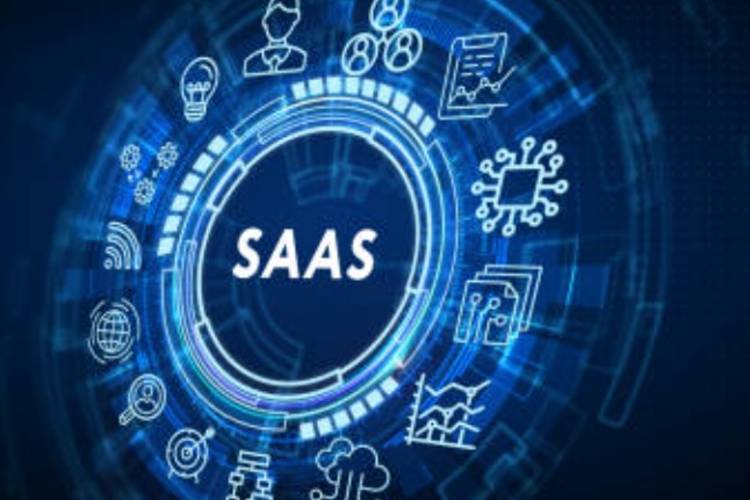
Enterprise software is undergoing a fundamental transformation. The rise of generative AI is reshaping the competitive contours of the Software-as-a-Service (SaaS) industry. In a market that increasingly demands hyper-personalised solutions, traditional, one-size-fits-all offerings are under strain. The shift is not about layering AI features onto legacy systems; it is about redefining value through real-time learning, outcome-based pricing, and adaptive software ecosystems.
Three trends are altering the balance of power in enterprise software:
Market Fragmentation: Enterprise tools that once catered to broad, horizontal use cases are giving way to vertical-specific, AI-native solutions.
Legacy vs. AI-Native Models: AI-first companies are nimble and data-centric. They iterate faster and personalise better. In contrast, incumbents benefit from long-standing customer relationships, broad integrations, and high switching costs.
Risk-Averse Buyers: IT decision-makers (ITDMs) tend to choose reliability over novelty. This benefits legacy providers—until AI-native challengers demonstrate consistent, superior outcomes.
READ | ISRO should chart its own path beyond NASA ties
Personalisation as the Core Value Proposition
The true promise of AI in enterprise software is not just automation, but individualisation. AI systems increasingly learn from user interactions, adapting workflows to the specific needs of each organisation. Software is no longer a static toolkit but an intelligent, evolving partner. What was once a premium customisation is fast becoming the default expectation.

Startups with AI at their core can ship features at a pace that traditional players find difficult to match. They plug into new ecosystems, adopt modular architectures, and fine-tune offerings rapidly. Yet, incumbents like Microsoft retain an edge through expansive distribution, deep product suites, and tight integrations across tools like Office, Azure, and Dynamics. The result is a contest between speed and scale.
Rethinking Revenue: From Subscriptions to Outcomes
AI makes possible a shift from flat licensing to outcome-based pricing. Instead of paying for software access, clients pay for performance—be it efficiency gains, predictive accuracy, or customer satisfaction. While legacy companies are locked into static pricing models, AI-first entrants are experimenting with dynamic, usage-based schemes that better reflect delivered value. For customers, this makes the cost of switching less daunting—and loyalty less certain.
Legacy players retain the advantage of incumbency: trusted relationships, product maturity, and integrated suites. But AI-first firms are rapidly building a case around adaptability, speed of innovation, and demonstrable value. While the former offer scale and stability, the latter bring agility and customisation.
This creates a two-speed market. In high-regulation, high-stakes industries—finance, healthcare, government—ITDMs may stick with proven vendors. But in rapidly evolving sectors, the gravitational pull is toward AI-first firms. Over time, as AI-native models prove their reliability, even the risk-averse may begin to migrate.
The ITDM Dilemma
Enterprise IT decision-makers, wary of risk and disruption, remain a powerful brake on rapid change. Their preference for stable, secure platforms helps sustain legacy providers. But as evidence of AI’s efficacy mounts—through certifications, pilot projects, and peer adoption—that conservatism may soften. The shift, when it comes, will be swift and decisive.
History offers a guide. Amazon’s AWS had the first-mover advantage in cloud services. Yet Microsoft, with its strong enterprise base and hybrid strategy, steadily gained ground. Google disrupted the productivity suite market with Workspace, but Microsoft Office remains dominant due to its integration depth and enterprise trust.
The lesson: incumbents cannot afford complacency. Without bold reinvention—often through acquisitions or partnerships—they risk ceding ground to faster, smarter challengers.
The growing demand for verticalised, use-case-specific software means the era of mass-market platforms may be nearing its end. Enterprises no longer want generic tools; they want solutions tailored to their industry, scale, and workflows. This forces legacy players to become more modular and responsive—or risk being sidelined by more focused, AI-native competitors.
Generative AI: Blending Stability with Innovation
The most successful players will be those who manage to combine the trust and reach of legacy platforms with the innovation and dynamism of AI. Microsoft’s rollout of tools like Office Copilot and Azure AI is one such effort—infusing existing products with generative capabilities without alienating conservative buyers.
Revenue models, too, must evolve. Outcome-based pricing, driven by measurable performance metrics, will become more common. Companies that fail to offer this flexibility risk being seen as overpriced and outdated.
The evolution of enterprise SaaS is not just about technology upgrades; it is about a systemic reordering of how software is bought, used, and valued. Incumbents still hold ground, supported by institutional memory and buyer inertia. But AI-first companies are not waiting. They are creating products that learn, iterate, and deliver results at a pace legacy systems struggle to match.
The strategic choice for enterprise leaders is no longer whether to embrace AI. It is how quickly and effectively they can overhaul their software ecosystems. In a market where software evolves in real time, those who do not will find themselves outpaced—not only by competitors but by their own users’ expectations.
Dr Badri Narayanan Gopalakrishnan is Fellow, NITI Aayog. Views expressed are personal.

